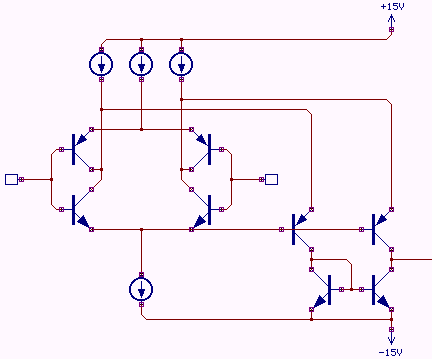jdbakker
Well-known member
Hi all,
I've been tinkering with discrete opamps lately, and Samuel's recent complementary DOA plus another look at Bruno's slides inspired me to come up with this:

The advantages would include a simplified VAS compared to a fully-complementary architecture, and the bootstrapped cascode should help with CM-induced distortion.
Thoughts? Have I reinvented the wheel here?
JDB.
[still dealing with a nasty flu, so I may well have missed anything glaringly obvious]
I've been tinkering with discrete opamps lately, and Samuel's recent complementary DOA plus another look at Bruno's slides inspired me to come up with this:

The advantages would include a simplified VAS compared to a fully-complementary architecture, and the bootstrapped cascode should help with CM-induced distortion.
Thoughts? Have I reinvented the wheel here?
JDB.
[still dealing with a nasty flu, so I may well have missed anything glaringly obvious]


